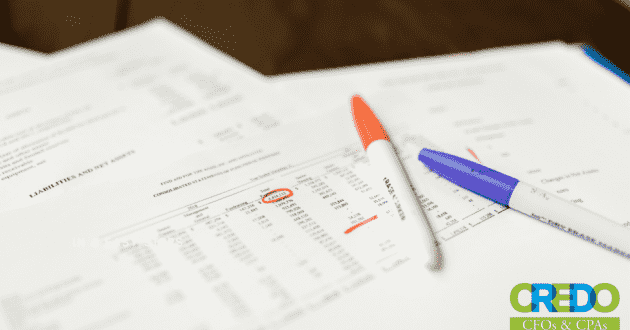The Meaning Of Your Numbers: Understanding The Value Of Your Business On A Balance Sheet Perspective
Focus on the value of your business on a balance sheet perspective.
Business owners are continually evaluating their success based on the number of dollars in the bank, making it difficult to address the subject of financial intelligence with them. Many business owners make the mistake of equating their success and sense of worth with their financial resources, which can put them in a precarious situation.
It’s not always comforting to know exactly what the figures mean. Many business owners appear to prefer keeping a low profile and relying on the assumption that success will come as a natural byproduct of their hard work and successful product sales.
However, this is not the case in the vast majority of companies. Having a firm grasp on money matters is essential to your long-term profitability. It’s something you can use to your advantage for as long as you live.
This is a common problem for businesses whose owners have never received adequate instruction in the interpretation of financial statements. It’s not uncommon for business owners to struggle with basic financial reporting tasks like reading their income statement, let alone demonstrating a comprehension of their balance sheet or statement of cash flows.
In this article, we will focus on the value of your business on a balance sheet perspective that would help you see the potential in your stats and how they can affect the future of your company.
The Importance of Balance Sheet to Analysis
One of the few areas where the adage “the statistics don’t lie” rings true is in financial analysis. There are a number of times when a balance sheet is particularly useful, including when a merger is being considered, when assets need to be liquidated to support debt, when an investor is weighing whether or not to take a position, and when a company is looking inward to see if it is financially stable enough to expand or begin repaying debts.
The top line, or cash, is often seen as the most crucial part of a balance sheet. Accounts receivable, short-term investments, property, plant, and equipment, and large liabilities are also vital components. Assets, liabilities, and equity are the three primary sections of a balance sheet.
How to Read a Balance Sheet
Two components of the balance sheet are separated, and according to the following equation, they must be equal to one another or balance one another out. A balance sheet’s primary calculation is:
Assets = Liabilities + Shareholders’ Equity
This indicates that a company’s liabilities, coupled with the equity investment brought into the company and its retained earnings, equal the value of the company’s assets, or the resources it uses to run its business.
In order to run its operations, a corporation must have assets, and these are backed by two things: its liabilities and its equity. In a publicly listed corporation, the sum of the initial investment plus any retained earnings constitutes the owners’ equity, also known as shareholders’ equity, and is a source of funding for the company.
Both assets and liabilities are listed on the balance sheet. The company’s assets are at the top or left, and its liabilities and shareholders’ equity are at the bottom or right. When the total of all of a company’s liabilities and stockholders’ equity is equal to the value of its assets, the balance sheet is said to be in balance.
The balance sheet’s assets and liabilities are broken down further inside each area according to when the account was last updated. On the asset side of things, therefore, books are normally organized with the more liquid ones at the top and the less liquid ones at the bottom. On the liability side of the ledger, the various accounts are broken down according to the time frame over which the liabilities were incurred.
Historical Book Value
Use of the asset’s historical value in the balance sheet is a fundamental principle of GAAP (Generally Accepted Accounting Principles). Simply said, the purchase price is what’s reflected in the books regardless of how much the market value has fluctuated since then. The utilization of past values stems from the fact that current market values are notoriously unstable and hard to prove. However, historical worth is something that can be seen and proven. (It should be noted that certain investments and other types of assets can be appraised using fair market value or some other metric.)
Imagine that the value of a certain asset, say a piece of land, has risen. Putting a “markup” on the balance sheet to reflect the land’s current market value would need a profit to be recorded on the income statement, but this profit would be based on an estimate of the land’s value rather than any hard data. Until it is sold, land is recorded on the balance sheet at its original purchase price.
Companies’ reliance on acquisition cost alone when determining the worth of their assets might lead to some curious discrepancies. Perhaps you’re a part of a corporation in the entertainment industry that invested $1 million thirty years ago to purchase land in the Los Angeles area. Even though the land is now worth $8 million, the balance sheet will only show a value of $1 million for it. In search of such “undervalued assets,” savvy investors often scrutinize a company’s balance sheet.
Adjusted Book Value
When determining a company’s worth, book value (sometimes called theoretical book value) is calculated by deducting tangible assets and liabilities from the overall value of the company’s assets.
When the fair market value of a company’s assets and liabilities is included in, the result is the company’s Adjusted Book Value. Liabilities and assets may be adjusted upwards or downwards so that their fair market value is more clearly displayed.
What is the function of adjusted book value? When total assets are subtracted from total liabilities and intangible assets, the result is a company’s theoretical book value. Value is realized when active assets are subtracted from passive ones, which is what the net worth of a corporation is. Nonetheless, the adjusted book value differs from the aforementioned valuation approach in that it takes into account additional accounting causes that are not represented by the theoretical book valuation approach. Adjusted book value is a way of valuing a company in which the book values of assets and liabilities are adjusted upwards (or downwards) to reflect their true market value.
Value of Invested Capital
A company’s MVIC (Market Value of Invested Capital) is its market value as measured by its capital expenditures. Invested capital in MVIC is the total value of a company’s equity and debt capital.
While market value of the enterprise creator (MVIC) is a financial metric, it is widely regarded as one of the most trustworthy and accurate approaches of valuing a small or private business. Capital that a company has amassed for the purpose of running its operations is what is meant by “invested capital” in the MVIC. When it comes to a company’s capital structure, MVIC can give an all-encompassing picture of its financial well-being.
Equity capital + long-term interest-bearing debt is the typical formula used to determine MVIC. MVIC is useful because it gives businesses a more holistic picture of the value of their invested capital in comparison to their total capital. Founders, potential investors, and other stakeholders in a firm can have a more accurate understanding of the company’s financial health and performance by computing its MVIC.
In order to generate profits, businesses should make use of all of their capital investments, which is the core idea behind the MVIC concept. To accomplish this, invested capital must be allocated and managed effectively so that return is maximized. To rephrase, MVIC is a tried and true strategy that provides enhanced comprehension of the worth of a firm’s capital structure. The estimated value can be used to foretell the firm’s future growth, development, and expansion potential in terms of available capital.
In addition, businesses can compare their results to those of competitors through the usage of MVIC applications. When it comes to optimizing your business’s operations, the utilization of MVIC is crucial in making important strategic decisions. While a company’s capital structure and financial activities are essential components in determining its MVIC.
Enterprise Value
“Enterprise value” is used when businesses need a method to calculate the value of a publicly traded company. To determine what to pay for a business or what you could get for your own when selling, this direct valuation criteria is typically used as a starting point or final destination.
EV is the total value of a firm as determined by its financial resources. Market capitalization (at today’s prices) and interest payments on debt are figured in (net debt, or debt minus cash). The enterprise value of a corporation can be estimated by adding together the enterprise cost and the company’s net profit.
Enterprise value is a theoretical estimate of how much money would be required to completely purchase a publicly traded firm. In practice, a premium to EV is often required for an acquisition bid to be accepted.
Having an idea of a company’s enterprise value is useful in a variety of contexts, including when exploring acquisition targets and considering purchase proposals based on shares. It’s a fundamental idea to keep in mind while doing the math on valuation multiples. Many alternative multiples employ EV as a component to compare the financial health of organizations that are otherwise similar. One such multiple is EV to EBITDA (earnings before interest, taxes, depreciation, and amortization).
Value of Equity
Equity is a critical yet sometimes misunderstood metric is essential for assessing your business’s long-term viability. The money that a company’s owners have put into it is called “shareholders’ equity.” This consists of both initial capital and the compounding earnings that have been reinvested by the company ever since it was founded.
A company’s financial health, stability, and the owners’ mentality toward the business can all be gleaned from a look at its shareholders’ equity. Indicating whether or not the owners are putting money back into the company and how much they care about the outcome.
Bankers and other experts often look at a company’s shareholders’ equity as an indicator of its financial health. They look at the ratio of equity to liabilities to determine how much debt the company can take on.
The ratio of shareholders’ equity to total liabilities is one measure of a company’s financial health. The difference between the two is an important measure of a business’s fiscal stability. Lenders want debt loads no more than two or three times equity as it is indicative of sound fiscal management and avoidance of undue debt burden.
Understanding Your Numbers Better
Spending some time learning the ins and outs of your financials may save yourself a lot of time and frustration by employing ratios in business and measuring things over the same time periods.
The key to realizing your company’s full potential may lie in your ability to use these figures to strategically plan, carry out, assess, and fine-tune. Learning to make sound judgments based on collected data can help you get insight into your company’s strengths and areas requiring improvement, allowing you to plot a course for the company’s future expansion.



